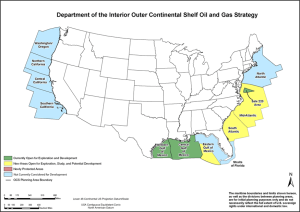The Obama Administration today announced a proposal to expand offshore oil and gas drilling and exploration to the east coast and other previously-off-limits areas. The offshore area from Delaware southward would be open, while New Jersey and areas north would remain closed.
According to the Department of Interior website, “The Obama Administration’s strategy uses science and new technologies to expand oil and gas production on the Outer Continental Shelf, while protecting fisheries, tourism, and places off our coasts that are too special to drill.”
Virginia has already made strides to prepare for drilling off its coasts.
See also: Washington Post article

